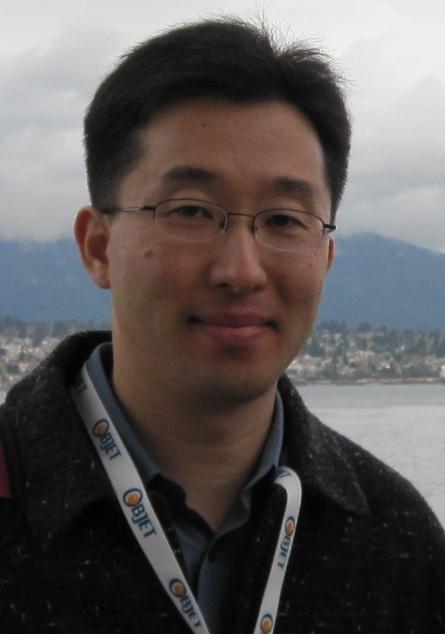Optimal Control of Redundant Systems with Controlled Infeasibility
Technical talk sponsored by the IEEE Control System Society and IEEE's North Jersey Chapter, entitled "Optimal Control of Redundant Systems with Controlled Infeasibility" by Dr Joo Kim of Polytechnic Institute of New York University, Brooklyn NY. The talk is preceded with pizza and soft drinks for attendees. Description of the talk is given below. Free parking across the street is available to attendees in the NJIT parking garage.
Date and Time
Location
Hosts
Registration
-
 Add Event to Calendar
Add Event to Calendar
- 161 Warren Streen
- Newark, NJ, New Jersey
- United States 07102
- Building: Electrical and Computer Engineering
- Room Number: ECEC 202
- Click here for Map
- Contact Event Host
- David Haessig Manager Waveform Products, BAE Systems, Wayne, NJ 973 934 9659 (cell) 973 305 2583 (office)
Speakers
 Joo H. Kim of Polytechnic Institute of New York University, Brooklyn, NY
Joo H. Kim of Polytechnic Institute of New York University, Brooklyn, NY
Optimal Control of Redundant Systems with Controlled Infeasibility
In optimal motion planning and control, the complex time-varying nature of redundant systems, environments, and task requirements causes complex domains and conflicting constraints. Since predicting or recovering infeasibility is not always possible, infeasibilities occur frequently and are not completely avoidable. We introduce a constrained nonlinear programming framework of controlled (as opposed to recovered) infeasibility for physically valid solutions while preserving the original problem and variable space. The constraint prioritization hierarchy includes a comprehensive classification of physical consistency, design requirements, and tasks. Priority weight functions having features of normalization and prioritization are incorporated into a sequential quadratic programming (SQP) algorithm to ensure generality and strict satisfaction of high-priority constraints, while lower-priority constraint violations are minimized. These are embedded in SQP through its merit function and composite cost function, in which general nonlinear functions including unilateral, time-dependent, and nonholonomic, can be incorporated in a unified approach. Also, the avoidance of the discontinuity problem with unilateral constraints is due to the time-dependent constraints strategy, which actively adapts to varying states. Numerical examples using multibody dynamic models of a redundant manipulator demonstrate these advantages.
Biography: Dr. Joo H. Kim is an Assistant Professor in the Department of Mechanical and Aerospace Engineering at Polytechnic Institute of New York University (NYU-Poly), which he joined in 2009. Previously, he was an Adjunct Assistant Professor of Mechanical Engineering and postdoctoral research scholar in the Center for Computer-Aided Design at the University of Iowa. Dr. Kim directs the Applied Dynamics and Optimization Laboratory where his group focuses on fundamental research in multibody dynamics, optimization, motion generation, design, and control of mechanical and biological systems. His research areas for application include robotics, biomechanics, and their intersections (e.g., exoskeletons), with particular interest in locomotion, balancing, manipulation, and energetics. Dr. Kim holds a Ph.D. (2006) in mechanical engineering, as well as M.S. degrees in mathematics, mechanical engineering, and biomedical engineering, all from The University of Iowa, and a B.S. degree in mechanical engineering from Korea University in Seoul, South Korea. Dr. Kim is a member of ASME, IEEE, and ASB, and organized several symposia and sessions in international conferences.
Email:
Address:Department of Mechanical and Aerospace Engineering, Polytechnic Institute of New York University, Brooklyn, New York, United States
Agenda
5:15 to 6:00 PM Technical Talk

